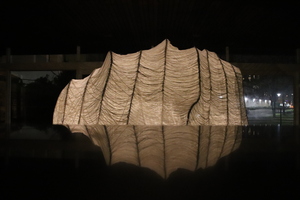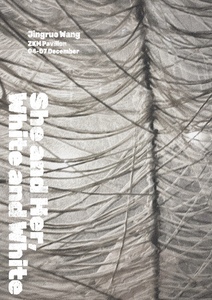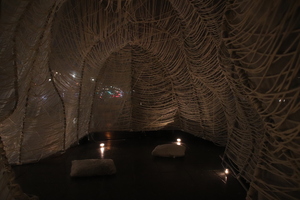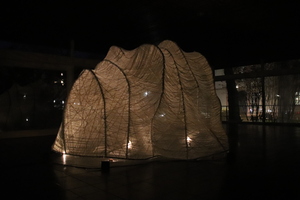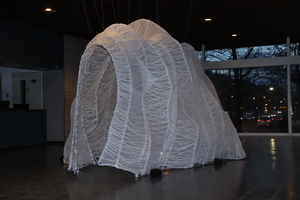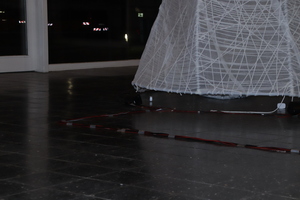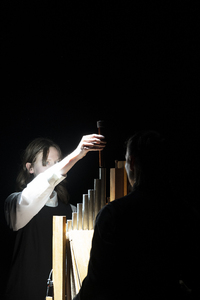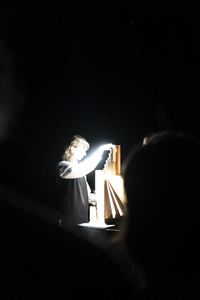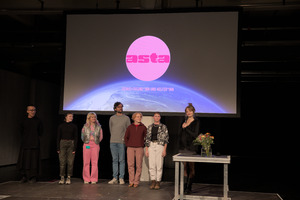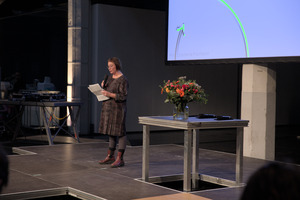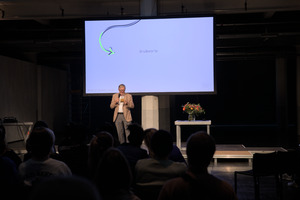HfG
Alle Inhalte mit Metadaten des Vokabulars "HfG". Sie sehen nur Inhalte, für die Sie berechtigt sind.
2621 Inhalte
- Seite 1 von 219
She and her, white and white
- Titel
- She and her, white and white
- Autor/in
- Kategorie
- Titel
- She and her, white and white
- Urheberrechtshinweis
- © Jingruo Wang
- Rechtsschutz/Lizenz
- Freigabe Nutzung HfG
- Medienersteller/in
- Beziehung/Funktion
- Projektleiter/in
- Semester
- Studiengang
- Typ der Abschlussarbeit
- Importiert am
- 12.12.2024
- Übergeordnete Sets
- 1
She and her, white and white
- Titel
- She and her, white and white
- Autor/in
- Kategorie
- Titel
- She and her, white and white
- Urheberrechtshinweis
- © Jingruo Wang
- Freigabe Nutzung HfG
- Medienersteller/in
- Projektleiter/in
- Semester
- Studiengang
- Typ der Abschlussarbeit
- Importiert am
- 12.12.2024
- Übergeordnete Sets
- 1
She and her, white and white
- Titel
- She and her, white and white
- Autor/in
- Kategorie
- Schlagworte
- Titel
- She and her, white and white
- Urheberrechtshinweis
- © Jingruo Wang
- Rechtsschutz/Lizenz
- Freigabe Nutzung HfG
- Medienersteller/in
- Beziehung/Funktion
- Projektleiter/in
- Semester
- Studiengang
- Typ der Abschlussarbeit
- Importiert am
- 12.12.2024
- Übergeordnete Sets
- 1
She and her, white and white
- Titel
- She and her, white and white
- Autor/in
- Kategorie
- Titel
- She and her, white and white
- Urheberrechtshinweis
- © Jingruo Wang
- Rechtsschutz/Lizenz
- Freigabe Nutzung HfG
- Medienersteller/in
- Beziehung/Funktion
- Projektleiter/in
- Semester
- Studiengang
- Typ der Abschlussarbeit
- Importiert am
- 12.12.2024
- Übergeordnete Sets
- 1
She and her, white and white
- Titel
- She and her, white and white
- Autor/in
- Kategorie
- Titel
- She and her, white and white
- Urheberrechtshinweis
- © Jingruo Wang
- Rechtsschutz/Lizenz
- Freigabe Nutzung HfG
- Medienersteller/in
- Beziehung/Funktion
- Projektleiter/in
- Semester
- Studiengang
- Typ der Abschlussarbeit
- Importiert am
- 12.12.2024
- Übergeordnete Sets
- 1
She and her, white and white
- Titel
- She and her, white and white
- Autor/in
- Kategorie
- Titel
- She and her, white and white
- Urheberrechtshinweis
- © Jingruo Wang
- Rechtsschutz/Lizenz
- Freigabe Nutzung HfG
- Medienersteller/in
- Beziehung/Funktion
- Projektleiter/in
- Semester
- Studiengang
- Typ der Abschlussarbeit
- Importiert am
- 12.12.2024
- Übergeordnete Sets
- 1
She and her, white and white
- Titel
- She and her, white and white
- Autor/in
- Kategorie
- Titel
- She and her, white and white
- Urheberrechtshinweis
- © Jingruo Wang © Dakang Wang
- Rechtsschutz/Lizenz
- Freigabe Nutzung HfG
- Medienersteller/in
- Beziehung/Funktion
- Projektleiter/in
- Semester
- Studiengang
- Typ der Abschlussarbeit
- Importiert am
- 13.01.2025
- Übergeordnete Sets
- 1
sentimental gentle rental
- Titel
- sentimental gentle rental
- Autor/in
- Kategorie
- Typ des Projekts/Werks
- Schlagworte
- Datierung
- 23.02.2024
- Titel
- sentimental gentle rental
- Urheberrechtshinweis
- © Nis Petersen
- Rechtsschutz/Lizenz
- Freigabe Nutzung HfG
- Medienersteller/in
- Beziehung/Funktion
- Abgebildete Personen
- Projektleiter/in
- Semester
- Studiengang
- Typ der Abschlussarbeit
- Importiert am
- 09.08.2024
- Übergeordnete Sets
- 1
sentimental gentle rental
- Titel
- sentimental gentle rental
- Autor/in
- Kategorie
- Typ des Projekts/Werks
- Schlagworte
- Datierung
- 23.02.2024
- Titel
- sentimental gentle rental
- Urheberrechtshinweis
- © Nis Petersen
- Freigabe Nutzung HfG
- Medienersteller/in
- Beziehung/Funktion
- Abgebildete Personen
- Projektleiter/in
- Semester
- Studiengang
- Typ der Abschlussarbeit
- Importiert am
- 09.08.2024
- Übergeordnete Sets
- 1
Semestereröffnung WiSe 2023
- Titel
- Semestereröffnung WiSe 2023
- Titel (en)
- Semestereröffnung WiSe 2023
- Beschreibung (de)
- Die Hochschule heißt die Erstsemester, Studierenden und Angehörigen der HfG Karlsruhe sowie Gäste, Freund:innen und Fördernde zum Beginn des Wintersemesters 2023/2024 in einer festlichen Semestereröffnung willkommen, die in diesem Jahr am Montag, 16. Oktober 2023 im Lichthof stattfindet.
Programm:
ab 17:30 Bar und DJ-Set Finn Baygan
18:00-18:10 Eröffnung Prof. Constanze Fischbeck
18:10-18:15 Grußwort Alistair Hudson
18:15-18:20 Grußwort Prof. Dr. Rupert Vogel
18:25-18:35 Verabschiedung Mitarbeitende und Lehrende und Begrüßung der neuen Lehrenden durch Prof. Dr. Matthias Bruhn
18:40-18:50 Künstlerischer Beitrag von Finn Baygan
18:50-19:10 Diplomübergaben durch die Fachgruppen
19:10-19:20 Preisübergabe durch Bürgermeister Dr. Albert Käuflein mit Jana Renger & Guillermo Wilkins
19:20-19:25 AStA Beitrag
19:25-19:30 Danksagung durch Prof. Dr. Matthias Bruhn
19:30-20:30 Bar und DJ-Set Finn Baygan
20:30 Im Forum: Performance aaahhhnnndddiii
- Die Hochschule heißt die Erstsemester, Studierenden und Angehörigen der HfG Karlsruhe sowie Gäste, Freund:innen und Fördernde zum Beginn des Wintersemesters 2023/2024 in einer festlichen Semestereröffnung willkommen, die in diesem Jahr am Montag, 16. Oktober 2023 im Lichthof stattfindet.
- Beschreibung (en)
- The university welcomes the freshmen, students and members of the HfG Karlsruhe as well as guests, friends and supporters at the beginning of the winter semester 2023/2024 in a festive semester opening, which will take place this year on Monday, October 16, 2023 in the Lichthof.
Program:
from 17:30 Bar and DJ set Finn Baygan
18:00-18:10 Opening Prof. Constanze Fischbeck
18:10-18:15 Greeting Alistair Hudson
18:15-18:20 Greeting Prof. Dr. Rupert Vogel
18:25-18:35 Farewell to staff and lecturers and welcome to the new lecturers by Prof. Dr. Matthias Bruhn
18:40-18:50 Artistic contribution by Finn Baygan
18:50-19:10 Presentation of diplomas by the departments
19:10-19:20 Award ceremony by mayor Dr. Albert Käuflein with Jana Renger & Guillermo Wilkins
19:20-19:25 AStA Contribution
19:25-19:30 Acknowledgement by Prof. Dr. Matthias Bruhn
19:30-20:30 Bar and DJ-Set Finn Baygan
20:30 In the Forum: Performance aaahhhnnndddiii
- The university welcomes the freshmen, students and members of the HfG Karlsruhe as well as guests, friends and supporters at the beginning of the winter semester 2023/2024 in a festive semester opening, which will take place this year on Monday, October 16, 2023 in the Lichthof.
- Typ des Projekts/Werks
- Schlagworte
- Datierung
- 16.10.2023
- Mitwirkende
- Ort: Institution
- Ort
- Lichthof
- Stadt
- Land
- Beteiligte Institution(en)
- Internetlinks
- Titel
- Semestereröffnung WiSe 2023
- Titel (en)
- Semester Opening WS 2023
- Urheberrechtshinweis
- © HfG, photo: Jihye Jang
- Rechtsschutz/Lizenz
- Freigabe Nutzung HfG
- Medienersteller/in
- Beziehung/Funktion
- Semester
- Importiert am
- 23.10.2023
- Übergeordnete Sets
- 1
Semestereröffnung WiSe 2023
- Titel
- Semestereröffnung WiSe 2023
- Titel (en)
- Semestereröffnung WiSe 2023
- Beschreibung (de)
- Die Hochschule heißt die Erstsemester, Studierenden und Angehörigen der HfG Karlsruhe sowie Gäste, Freund:innen und Fördernde zum Beginn des Wintersemesters 2023/2024 in einer festlichen Semestereröffnung willkommen, die in diesem Jahr am Montag, 16. Oktober 2023 im Lichthof stattfindet.
Programm:
ab 17:30 Bar und DJ-Set Finn Baygan
18:00-18:10 Eröffnung Prof. Constanze Fischbeck
18:10-18:15 Grußwort Alistair Hudson
18:15-18:20 Grußwort Prof. Dr. Rupert Vogel
18:25-18:35 Verabschiedung Mitarbeitende und Lehrende und Begrüßung der neuen Lehrenden durch Prof. Dr. Matthias Bruhn
18:40-18:50 Künstlerischer Beitrag von Finn Baygan
18:50-19:10 Diplomübergaben durch die Fachgruppen
19:10-19:20 Preisübergabe durch Bürgermeister Dr. Albert Käuflein mit Jana Renger & Guillermo Wilkins
19:20-19:25 AStA Beitrag
19:25-19:30 Danksagung durch Prof. Dr. Matthias Bruhn
19:30-20:30 Bar und DJ-Set Finn Baygan
20:30 Im Forum: Performance aaahhhnnndddiii
- Die Hochschule heißt die Erstsemester, Studierenden und Angehörigen der HfG Karlsruhe sowie Gäste, Freund:innen und Fördernde zum Beginn des Wintersemesters 2023/2024 in einer festlichen Semestereröffnung willkommen, die in diesem Jahr am Montag, 16. Oktober 2023 im Lichthof stattfindet.
- Beschreibung (en)
- The university welcomes the freshmen, students and members of the HfG Karlsruhe as well as guests, friends and supporters at the beginning of the winter semester 2023/2024 in a festive semester opening, which will take place this year on Monday, October 16, 2023 in the Lichthof.
Program:
from 17:30 Bar and DJ set Finn Baygan
18:00-18:10 Opening Prof. Constanze Fischbeck
18:10-18:15 Greeting Alistair Hudson
18:15-18:20 Greeting Prof. Dr. Rupert Vogel
18:25-18:35 Farewell to staff and lecturers and welcome to the new lecturers by Prof. Dr. Matthias Bruhn
18:40-18:50 Artistic contribution by Finn Baygan
18:50-19:10 Presentation of diplomas by the departments
19:10-19:20 Award ceremony by mayor Dr. Albert Käuflein with Jana Renger & Guillermo Wilkins
19:20-19:25 AStA Contribution
19:25-19:30 Acknowledgement by Prof. Dr. Matthias Bruhn
19:30-20:30 Bar and DJ-Set Finn Baygan
20:30 In the Forum: Performance aaahhhnnndddiii
- The university welcomes the freshmen, students and members of the HfG Karlsruhe as well as guests, friends and supporters at the beginning of the winter semester 2023/2024 in a festive semester opening, which will take place this year on Monday, October 16, 2023 in the Lichthof.
- Typ des Projekts/Werks
- Schlagworte
- Datierung
- 16.10.2023
- Mitwirkende
- Ort: Institution
- Ort
- Lichthof
- Stadt
- Land
- Beteiligte Institution(en)
- Internetlinks
- Titel
- Semestereröffnung WiSe 2023
- Titel (en)
- Semester Opening WS 2023
- Urheberrechtshinweis
- © HfG, photo: Jihye Jang
- Rechtsschutz/Lizenz
- Freigabe Nutzung HfG
- Medienersteller/in
- Beziehung/Funktion
- Abgebildete Personen
- Semester
- Importiert am
- 23.10.2023
- Übergeordnete Sets
- 1
Semestereröffnung WiSe 2023
- Titel
- Semestereröffnung WiSe 2023
- Titel (en)
- Semestereröffnung WiSe 2023
- Beschreibung (de)
- Die Hochschule heißt die Erstsemester, Studierenden und Angehörigen der HfG Karlsruhe sowie Gäste, Freund:innen und Fördernde zum Beginn des Wintersemesters 2023/2024 in einer festlichen Semestereröffnung willkommen, die in diesem Jahr am Montag, 16. Oktober 2023 im Lichthof stattfindet.
Programm:
ab 17:30 Bar und DJ-Set Finn Baygan
18:00-18:10 Eröffnung Prof. Constanze Fischbeck
18:10-18:15 Grußwort Alistair Hudson
18:15-18:20 Grußwort Prof. Dr. Rupert Vogel
18:25-18:35 Verabschiedung Mitarbeitende und Lehrende und Begrüßung der neuen Lehrenden durch Prof. Dr. Matthias Bruhn
18:40-18:50 Künstlerischer Beitrag von Finn Baygan
18:50-19:10 Diplomübergaben durch die Fachgruppen
19:10-19:20 Preisübergabe durch Bürgermeister Dr. Albert Käuflein mit Jana Renger & Guillermo Wilkins
19:20-19:25 AStA Beitrag
19:25-19:30 Danksagung durch Prof. Dr. Matthias Bruhn
19:30-20:30 Bar und DJ-Set Finn Baygan
20:30 Im Forum: Performance aaahhhnnndddiii
- Die Hochschule heißt die Erstsemester, Studierenden und Angehörigen der HfG Karlsruhe sowie Gäste, Freund:innen und Fördernde zum Beginn des Wintersemesters 2023/2024 in einer festlichen Semestereröffnung willkommen, die in diesem Jahr am Montag, 16. Oktober 2023 im Lichthof stattfindet.
- Beschreibung (en)
- The university welcomes the freshmen, students and members of the HfG Karlsruhe as well as guests, friends and supporters at the beginning of the winter semester 2023/2024 in a festive semester opening, which will take place this year on Monday, October 16, 2023 in the Lichthof.
Program:
from 17:30 Bar and DJ set Finn Baygan
18:00-18:10 Opening Prof. Constanze Fischbeck
18:10-18:15 Greeting Alistair Hudson
18:15-18:20 Greeting Prof. Dr. Rupert Vogel
18:25-18:35 Farewell to staff and lecturers and welcome to the new lecturers by Prof. Dr. Matthias Bruhn
18:40-18:50 Artistic contribution by Finn Baygan
18:50-19:10 Presentation of diplomas by the departments
19:10-19:20 Award ceremony by mayor Dr. Albert Käuflein with Jana Renger & Guillermo Wilkins
19:20-19:25 AStA Contribution
19:25-19:30 Acknowledgement by Prof. Dr. Matthias Bruhn
19:30-20:30 Bar and DJ-Set Finn Baygan
20:30 In the Forum: Performance aaahhhnnndddiii
- The university welcomes the freshmen, students and members of the HfG Karlsruhe as well as guests, friends and supporters at the beginning of the winter semester 2023/2024 in a festive semester opening, which will take place this year on Monday, October 16, 2023 in the Lichthof.
- Typ des Projekts/Werks
- Schlagworte
- Datierung
- 16.10.2023
- Mitwirkende
- Ort: Institution
- Ort
- Lichthof
- Stadt
- Land
- Beteiligte Institution(en)
- Internetlinks
- Titel
- Semestereröffnung WiSe 2023
- Titel (en)
- Semester Opening WS 2023
- Urheberrechtshinweis
- © HfG, photo: Jihye Jang
- Rechtsschutz/Lizenz
- Freigabe Nutzung HfG
- Medienersteller/in
- Beziehung/Funktion
- Abgebildete Personen
- Semester
- Importiert am
- 23.10.2023
- Übergeordnete Sets
- 1
